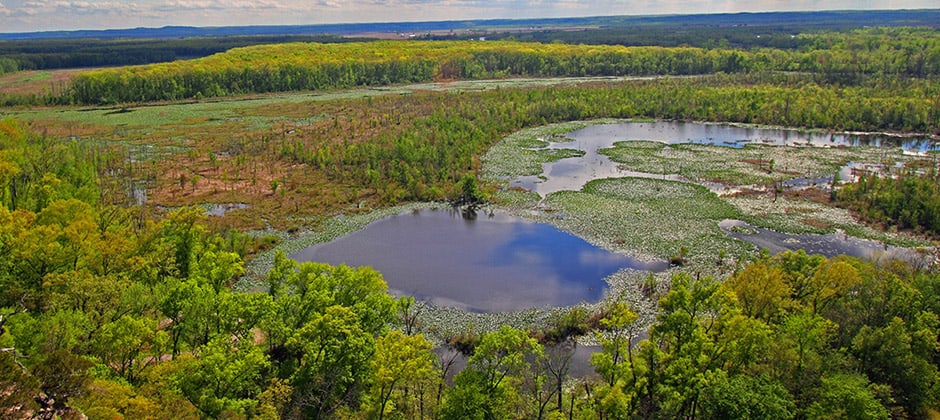Share this article
Invasive plants reduce native animal species
Invasive plants quickly take over land from native plant species and eventually reduce the amount of native animals in the area, according to a pair of recent studies.
“It’s almost a worst case scenario,” said Jacob Barney, an associate professor of invasive plant ecology at Virginia Polytechnic Institute and State University and one of the co-authors of one of the two studies, published recently in Global Change Biology. “Within a given ecosystem they are reducing the amount of native animals while favoring the invasive ones.”
Barney said that most studies have only looked at the effects of one invasive plant on one animal species.
“We don’t know as much about the consequences of invasive plants as you would expect,” he said.
His team wanted to approach the situation more holistically to see whether any trends could be discovered — especially since the world is becoming a more invaded place. They examined the scientific literature, looking at 12 different studies that collectively examined the impact on hundreds of species.
“This is a conservative first estimate of the differential impact of plants on native and exotic animals,” Barney said.
They found that invasive plants seemed to have little effect on exotic animal species, but reduced the number of native creatures. Invasive plants impacted vertebrate species and worms the most, Barney added, while mollusks and arthropods were less affected.
The studies they chose may show some bias, though, since previous research was more likely to focus on animals that feed, nest or are more likely to be affected by the takeover of invasive species. Barney said that the literature doesn’t have as much of a focus on larger carnivores like wolves (Canis lupus).
“We have many more studies on less mobile animals than we do on territorial animals,” he said, adding that many of the studies looked at topics like birds changing nesting habits based on a change in forest structure, or spiders moving into forests to take advantage of taller plants.
The team also looked at the impact of invasive plants over time and found that the longer alien vegetation is present, fewer native animals will persist in the area.
“That’s a solid argument for managing invasive plants early,” Barney said.
This finding fits in well with those of another recent study published in Ecology Letters, though co-author Greg Spyreas, a plant ecology researcher at the University of Illinois, said that it’s often only a handful of species that really create problems.
He and his co-authors found that aggressive, dominant non-native species lowered species richness in areas more than even the most aggressive native species.
“It was rather surprising just how abundant these few invaders become. Once they come to a site, they will become the dominant plant,” Spyreas said.
In their study area, including all of Illinois, the team singled out five invasive species — reed canary grass, a non-native cattail, non-native Phragmites and two European buckthorns, which account for 90% of the problem.
“The effects are just enormous,” he said, but if control efforts focused just on these plants, they could solve much of the problem caused by invasive plants across Illinois wetlands.
This will be more and more important as alien species continue to take hold in new environments due to direct human activity or the effects of climate change. Especially since, as other research has recently found in Hawaii, invasive bird species may favor dispersing the seeds of invasive plants over native ones.
“The world is becoming increasingly invaded, so we’re much more likely to be living in a multi-invaded ecosystem than we were before,” Barney said.
Header Image: A wetland in the Shawnee National Forest in southern Illinois consists of a wide variety of native plants and supports a diversity of birds, mammals and insects. ©Paul Marcum








